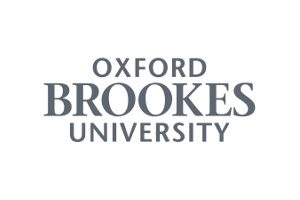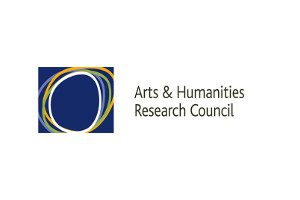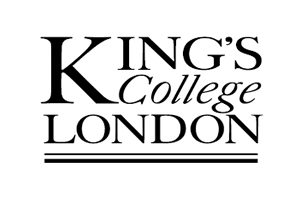Matthew Robinson, Vicar of Burneston
(b. Dec. 14, 1628, Rokeby Park, Yorkshire – d. Nov. 27, 1694, Ripley, Harrogate, Yorkshire )
Gender: M
Matthew was born at Rokeby Park in North Yorkshire, which had been purchased by his grandfather in 1610. He was sent to a grammar school at the age of seven, where he excelled in Latin, and proceeded to a more eminent school to prepare him for entry to university.
It was suggested that Matthew should be sent as a page to the Parliamentary commander Thomas Lord Fairfax, whom his father had served, but his schoolmasters were keen that he should go to university. At the time Oxford was occupied by the Royalist army and Cambridge was a Parliamentary garrison, so at the age of sixteen Matthew went north to Edinburgh, but before long plague broke out in the city and he returned home. A few months later he set off for Cambridge, crossing a dangerous and war-torn country. He was admitted to St John’s College on 4th November 1645, but the Royalist army attacked the city and he had to flee to Ely. On his return he offered his services to the Governor of Cambridge Castle, and did sentry duty every night until the King’s forces retreated. He was a diligent student and took his Bachelor’s degree in 1648.
Despite the Robinson family’s Parliamentary affiliations, Matthew was deeply opposed to the trial of King Charles I, and returned home to avoid the consequences of the king’s execution. He formed a plan to go to Padua to study medicine, but was unable to afford the trip. His friends from St John’s College persuaded him to put himself forward for a fellowship, and he was elected in April 1650, and happily returned to Cambridge to pursue his medical studies.
But all was to change when his uncle, John Robinson, died on 28th May 1651. John was the Vicar of Burneston in North Yorkshire, and the living was in the gift of the Robinson family. His mother and elder brother insisted that Matthew should accept the living, which at the time he thought ‘the greatest affliction that had ever befallen him’. He was in his heart a religious traditionalist, and was distressed by the dominance of the Puritans in the Commonwealth, fearing that they would abolish bishops and sell off all the land owned by the Church of England and the universities. Nevertheless, he dutifully resigned his fellowship and resolved to take holy orders.
At the age of 28, Matthew married Jane Pickering, daughter of Mark Pickering of Ackworth near Wakefield. She was described as ‘a gentlewoman of good family … with a competent fortune’. They had no children.
Matthew was a conscientious clergyman, preaching sermons twice on a Sunday, and was genuinely devout, observing his private as well as public devotions. He was also an active member of local society, keeping a good table and hunting with beagles. His passion was horses: he set up a stud of brood mares and bred colts, some of which won races at Newmarket. He sold some of them for as much as £250 (more than £250,000 today). As a result, he became a wealthy man. On a visit to London he was persuaded to attend Whitehall, where King Charles II consulted him about a horse which his son the Duke of Monmouth was to ride at the Battle of Bothwell Bridge.
Matthew’s financial success was regarded by his neighbours as ‘next to miraculous’. He had started in life with a modest annuity of £40, Burneston generated a net sum of less than £100 and his wife had brought under £800 to their marriage. He entertained his neighbours, was charitable to the poor and generous to his relations, and yet at his death left an estate that was estimated at a value of £20,000. In contemporary terms, he was a millionaire.
In his fifties, Matthew developed stones in his bladder which caused him severe pain and made it impossible for him to ride or travel by carriage. In his later years he could not even stand in the pulpit. In September 1682 he resigned the living of Burneston to his nephew George Grey, son of his sister Frances, and went to Ripley near Harrogate to manage the estate of Lady Ingilby, whose husband had just died leaving the family affairs in a terrible mess. Matthew’s skill in handling money was well-known, and he was frequently asked to be an executor or a trustee to his relatives and neighbours. It took him two years to sort out the Ripley estate, for which he refused to accept any payment.
Matthew wished to do something to benefit his parish, and in 1680 he established two free schools and an almshouse for six old people. The building cost him £1,200 and he endowed a gift of land that generated £43 5s a year, giving administrative responsibility to his nephew George Grey. The Matthew Robinson Trust still exists today, though the modern equivalent of £43 5s does not go a long way. Matthew apparently cut with his own hands the sun dial on the end of the building, and carved the plaque over the left door that records in Latin that it was erected by Matthew Robinson, Vicar of Burneston, in 1680. The plaque over the right door shows the Robinson coat of arms.
Matthew died in Ripley on 27th November 1694, aged 66. He was buried in the chancel of St Lambert’s Church, under a marble slab of his own design. In his will he left a life interest in all his lands in Barden and Barden Dykes in the parish of Hawkswell (now Hauxwell), twelve miles north of Burneston, to his wife Jane; these generated an annual rent of £106. She and her niece received all his household effects, and she received a further legacy of £100 as well as “all such sums of monies as were left her by her mother lately deceased, or which she out of her frugal care hath saved”. After her death, the lands were to pass to his brother Leonard Robinson and after his decease to his son Thomas Robinson and his heirs. Other lands he owned in Barforth in Teesdale, Thornaby (now part of Stockton-on-Tees), Morton, Bishopdale in Wensleydale and Moulton north of Richmond had already been settled on Leonard and his heirs. In 1700 they were inherited by the seven-year-old Matthew Robinson, Elizabeth Montagu’s father.
George Grey received other lands, out of whose rents he was to pay for the maintenance of the schools and hospital in Burneston. He also inherited his uncle’s library and papers, among which was a lengthy manuscript containing a commentary on the Bible that Matthew had written in his later years: George took it upon himself to publish this, and attached to it a biography of his uncle which is the source of the information we have today. A copy of the book was presented by George’s son Zachary Grey to the library of St John’s College, Cambridge, where it was discovered and re-published in 1856 by John Eyton Bickersteth Mayor as The Autobiography of Matthew Robinson. It is not clear why Mayor described it as an autobiography, since it is written in the third person, refers to Matthew’s death and burial, and the statements on page 80 make it clear that it was written by his nephew. In the second volume of his work Cambridge in the Seventeenth Century (Cambridge University Press & Macmillan), Mayor helpfully included a copy of the Will in an appendix.
Also known as:
- Vicar of Burneston
- Mathew Rev Robinson
Mentioned in 1 letters
| Title | EMCO ID |
|---|---|
| Letter from Elizabeth Montagu to Elizabeth Carter | 3054 |
No transcribed letters| show both transcribed and un-transcribed letters in results
Please note that all dates and location information are provisional, initially taken from the library and archive catalogues. As our section editors continue to work through the material we will update our database and the changes will be reflected across the edition.
Browser support: The website works best using the Chrome, Edge, and Firefox browsers on the PC, and only Chrome and Firefox on the Mac.




